publications
peer-reviewed publications in reversed chronological order.
2025
-
 Corporate Responses to Generative AI: Early Evidence from Conference CallsNing Jia , Ningzhong Li , Guang Ma, and 1 more authorReview of Accounting Studies, 2025
Corporate Responses to Generative AI: Early Evidence from Conference CallsNing Jia , Ningzhong Li , Guang Ma, and 1 more authorReview of Accounting Studies, 2025We provide early evidence of corporate responses to generative artificial intelligence (GAI) through managerial discussions of GAI in conference calls after ChatGPT’s release in November 2022. Following the release, these managerial discussions increase substantially, and most discussions have positive tone and contain action initiatives. The increase is more pronounced for larger firms, growth firms, younger firms, and high-tech industries. The largest increase is observed in the industry of business equipment–computers, software, and electronic equipment, while the utilities, chemicals and allied products, and oil, gas, and coal extraction industries experience the smallest increases. Managers of firms with greater innovation intensity (reflected in patent filings), cybersecurity threats, labor exposure to AI, and customer operations are more likely to increase GAI discussions. The results are primarily driven by positive-tone discussions and those with action initiatives. Analyst discussions of GAI exhibit similar patterns, except for patent filings. Finally, managers’ GAI discussions inform investors.
@article{JLMX2025, title = {Corporate Responses to Generative AI: Early Evidence from Conference Calls}, journal = {Review of Accounting Studies}, volume = {forthcoming}, year = {2025}, issn = {1380-6653}, doi = {https://doi.org/10.1007/s11142-025-09916-1}, url = {https://link.springer.com/article/10.1007/s11142-025-09916-1}, author = {Jia, Ning and Li, Ningzhong and Ma, Guang and Xu, Da}, keywords = {generative AI, ChatGPT, conference call, financial analysts, market reaction}, }
2024
-
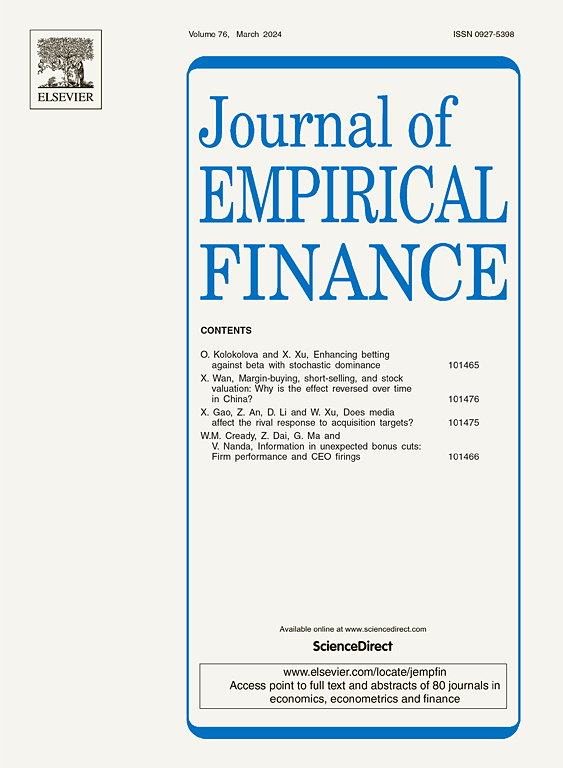 Information in Unexpected Bonus Cuts: Firm Performance and CEO FiringsWilliam M. Cready , Zhonglan Dai , Guang Ma, and 1 more authorJournal of Empirical Finance, 2024
Information in Unexpected Bonus Cuts: Firm Performance and CEO FiringsWilliam M. Cready , Zhonglan Dai , Guang Ma, and 1 more authorJournal of Empirical Finance, 2024An extensive literature finds that CEO compensation, especially bonus pay, exhibits downward rigidity. This is despite corporate boards usually retaining the discretion to deviate from their stated bonus formulae. We conjecture that the infrequent occasions in which there is an unexpected bonus cut, the board likely possesses unfavorable private information about the firm’s long-term prospects and the CEO’s ability. We hypothesize, therefore, that unexpected bonus cuts will be predictive of the company’s future operating performance as well as forced CEO turnovers. We first validate our private information premise by showing that stock market reactions to CEO firings or earnings announcements are muted for firms experiencing unexpected bonus cuts but not for those without cuts. Consistent with these predictions, we find that unexpected bonus cuts are robust predictors of subsequent underperformance (ROE) and lower firm valuation (Tobin’s Q) as well as CEO firings. Further, we examine the impact of Regulation S-K (2006) and show that predictive power becomes stronger post Reg. S-K, along with the disappearance of downward rigidity. This suggests that compensation transparency makes it harder for boards to deviate from stated bonus formulae and, if they do, the deviations are more informative.
@article{CREADY2024101466, title = {Information in Unexpected Bonus Cuts: Firm Performance and CEO Firings}, journal = {Journal of Empirical Finance}, volume = {76}, pages = {101466}, year = {2024}, issn = {0927-5398}, doi = {https://doi.org/10.1016/j.jempfin.2024.101466}, url = {https://www.sciencedirect.com/science/article/pii/S092753982400001X}, author = {Cready, William M. and Dai, Zhonglan and Ma, Guang and Nanda, Vikram}, keywords = {CEO firings, Bonus, Unexpected bonus cuts, Firm performance}, }
2023
-
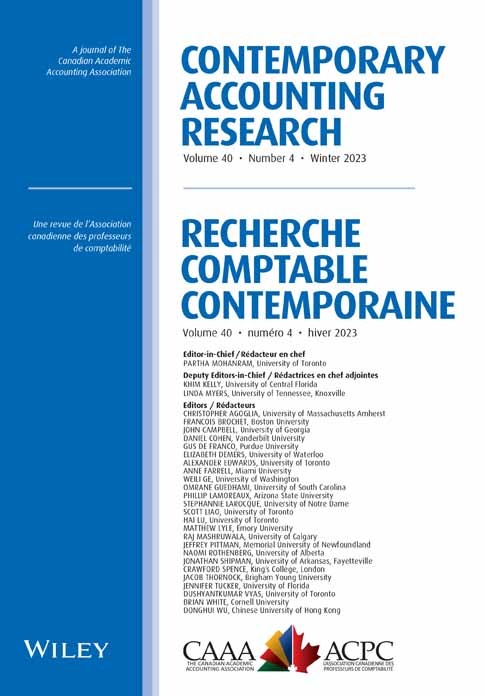 Financial Statement SimilarityStephen V. Brown , Guang Ma, and Jennifer Wu TuckerContemporary Accounting Research, 2023
Financial Statement SimilarityStephen V. Brown , Guang Ma, and Jennifer Wu TuckerContemporary Accounting Research, 2023We propose financial statement similarity as a measure of financial reporting comparability. The firm-pair version of our measure reflects the degree to which two firms report similar relations within their financial statement items; this version can help managers and market participants identify peer firms. The firm-year version of our measure reflects the degree to which a firm reports financial statement relations that are similar to other members of its industry; this version can help market participants, regulators, and auditors screen firms for further attention. Our measure uses the presence and amounts of almost all financial items reported by a firm. We validate our measure in four sets of analyses to establish concurrent validity and in three sets of analyses to establish predictive validity. In all these tests, we contrast our measure with the comparability measure in De Franco et al. (2011) and a multivariate measure that considers the presence, but not amounts, of financial statement items. Our measure outperforms the alternatives and can be a useful tool for users.
@article{https://doi.org/10.1111/1911-3846.12885, author = {Brown, Stephen V. and Ma, Guang and Tucker, Jennifer Wu}, title = {Financial Statement Similarity}, journal = {Contemporary Accounting Research}, volume = {40}, number = {4}, pages = {2577-2615}, keywords = {benchmark firms, comparability, financial reporting, peer firms, similarity, comparabilité, entreprises homologues, information financière, référence en matière d’entreprises, similitude}, doi = {https://doi.org/10.1111/1911-3846.12885}, url = {https://onlinelibrary.wiley.com/doi/abs/10.1111/1911-3846.12885}, eprint = {https://onlinelibrary.wiley.com/doi/pdf/10.1111/1911-3846.12885}, year = {2023}, }
2022
-
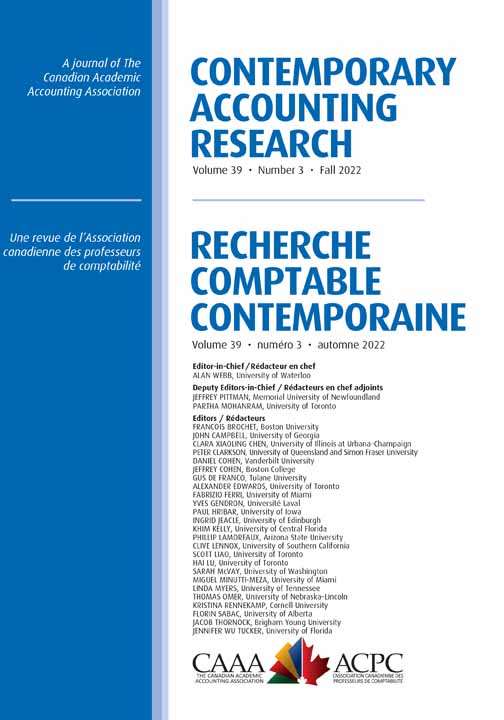 Labor Market Benefit of Disaggregated DisclosureSean Cao , Yinghua Li , and Guang MaContemporary Accounting Research, 2022
Labor Market Benefit of Disaggregated DisclosureSean Cao , Yinghua Li , and Guang MaContemporary Accounting Research, 2022Asymmetric information is a fundamental friction that results in mismatches and efficiency losses in the labor market. In this study, we posit that more disaggregated financial disclosure by a CEO candidate’s prior employer can help the hiring firm better assess the possible fit between its operational needs and the candidate’s skill set. Using a mandatory segment reporting reform in the United States (SFAS 131) as an exogenous shock to disclosure disaggregation, we find a significant increase in the firm-CEO match quality when the hiring firm has access to more disaggregated segment information about the external candidate’s past employment. Furthermore, the improvement in firm-CEO matching is greater when segment information is incrementally more useful for evaluation of candidate skills. These findings reveal a novel labor market benefit of disaggregated financial disclosure: alleviating pre-hiring information deficiencies and facilitating efficient allocation of CEO talent across firms.
@article{https://doi.org/10.1111/1911-3846.12771, author = {Cao, Sean and Li, Yinghua and Ma, Guang}, title = {Labor Market Benefit of Disaggregated Disclosure}, journal = {Contemporary Accounting Research}, volume = {39}, number = {3}, pages = {1726-1757}, keywords = {asymmetric information, disclosure disaggregation, matching, labor market frictions, CEO hiring, executive labor market, information asymétrique, désagrégation des informations, appariement, frictions sur le marché du travail, recrutement des PDG, marché du travail des cadres}, doi = {https://doi.org/10.1111/1911-3846.12771}, url = {https://onlinelibrary.wiley.com/doi/abs/10.1111/1911-3846.12771}, eprint = {https://onlinelibrary.wiley.com/doi/pdf/10.1111/1911-3846.12771}, year = {2022}, }
2021
-
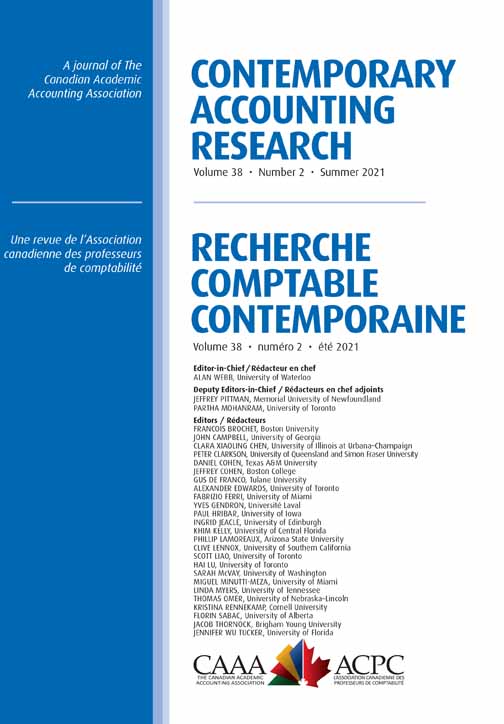 Adverse Selection, Diversion of Resources, and ConservatismPei-Cheng Liao , Guang Ma, and Suresh RadhakrishnanContemporary Accounting Research, 2021
Adverse Selection, Diversion of Resources, and ConservatismPei-Cheng Liao , Guang Ma, and Suresh RadhakrishnanContemporary Accounting Research, 2021We consider an investor’s choice of conservative reporting, bonus payments, and investment decisions in the presence of the hidden-information agency problem of a manager’s productivity and the hidden-action agency problem of a manager’s diversion of resources. It is important to consider the hidden-action and hidden-information agency problems in isolation and their interaction to gain insights into the drivers of demand for conservatism. We show that the conservative (nonconservative) regime is optimal for the high-productivity (low-productivity) manager when both agency problems exist, even though the nonconservative regime is optimal for both the high- and low-productivity managers when only the hidden-action or the hidden-information problem exists. Essentially, the low-productivity manager can misrepresent as the high-productivity manager to obtain high investment levels and divert resources only in the presence of both agency problems. This added layer of agency problem creates the demand for conservatism and highlights the importance of the interaction between the hidden-action and hidden-information agency problems. Furthermore, we show that as the conservatism level increases (i) the optimal investment level conditional on a good report for the high-productivity manager increases and approaches the first-best level (i.e., ex-post investment efficiency increases); (ii) the expected optimal investment level for the high-productivity manager decreases and diverges from the expected first-best level (i.e., ex-ante investment efficiency decreases); and (iii) the expected bonus payment to the high- and low-productivity managers decreases. These findings provide insights into how the demand for conservatism arises in the presence of both hidden-information and hidden-action agency problems and provide empirical guidance relating conservatism to investment efficiency.
@article{https://doi.org/10.1111/1911-3846.12643, author = {Liao, Pei-Cheng and Ma, Guang and Radhakrishnan, Suresh}, title = {Adverse Selection, Diversion of Resources, and Conservatism}, journal = {Contemporary Accounting Research}, volume = {38}, number = {2}, pages = {1114-1138}, keywords = {screening, tunneling, resource diversion, conservatism, sélection, tunnellisation, détournement des ressources, conservatisme}, doi = {https://doi.org/10.1111/1911-3846.12643}, url = {https://onlinelibrary.wiley.com/doi/abs/10.1111/1911-3846.12643}, eprint = {https://onlinelibrary.wiley.com/doi/pdf/10.1111/1911-3846.12643}, year = {2021}, }
2019
-
 The Information Content of Operations-Related DisclosuresGuang MaJournal of Accounting Literature, 2019
The Information Content of Operations-Related DisclosuresGuang MaJournal of Accounting Literature, 2019This study examines the information content of firms’ operations-related disclosures (ORDs) and the importance of these disclosures as an information source to stock markets relative to other commonly examined sources of information. I find that ORDs constitute a large portion of corporate press releases. These disclosures are associated with significant stock price reactions and trading volume. The stock price reactions to ORDs are greater than the reactions to 10-K/Q reports and are of similar magnitudes to the reactions to 8-K filings. On average, ORDs explain variation in firms’ quarterly returns to a similar degree as management earnings forecasts and 10-K/Q reports for the full sample and to a greater degree for small firms and firms with lower earnings quality.
@article{JAL, author = {Ma, Guang}, title = {The Information Content of Operations-Related Disclosures}, journal = {Journal of Accounting Literature}, volume = {43}, number = {1}, pages = {87-107}, keywords = {nonfinancial disclosure, operations disclosure, information content, relative importance}, doi = {https://doi.org/10.1016/j.acclit.2019.11.004}, url = {https://onlinelibrary.wiley.com/doi/abs/10.1111/1911-3846.12643}, eprint = {https://www.emerald.com/insight/content/doi/10.1016/j.acclit.2019.11.004/full/html}, year = {2019}, }
2018
-
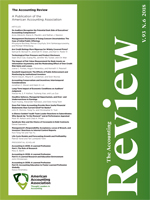 Technological Peer Pressure and Product DisclosureSean Shun Cao , Guang Ma, Jennifer Wu Tucker , and 1 more authorThe Accounting Review, Nov 2018
Technological Peer Pressure and Product DisclosureSean Shun Cao , Guang Ma, Jennifer Wu Tucker , and 1 more authorThe Accounting Review, Nov 2018We introduce a firm-specific measure of the technological aspect of competition—technological peer pressure—and examine firm-initiated product development-related press releases. We argue that empirical examinations of the theorized negative relation between competition and disclosure require the type of voluntary disclosure to be relevant to the dimension of competition under examination to ensure that firms incur significant proprietary costs of disclosure. In other words, many types of disclosure do not provide actionable information to competitors and, thus, should not be affected by that dimension of competition. We expect a negative relation between technological peer pressure and product disclosure because the latter reveals firms’ strategies, allocations, and progress of technological investments in product development to competitors. In contrast, we do not expect a negative relation between technological peer pressure and management earnings forecasts—the most common type of voluntary disclosure used in accounting research. Our test results are consistent with these expectations.Data Availability: All data are available from public sources. Our TPP Measure is available for download, please see the link in Appendix G.
@article{10.2308/accr-52056, author = {Cao, Sean Shun and Ma, Guang and Tucker, Jennifer Wu and Wan, Chi}, title = {{Technological Peer Pressure and Product Disclosure}}, journal = {The Accounting Review}, volume = {93}, number = {6}, pages = {95-126}, year = {2018}, month = nov, issn = {0001-4826}, doi = {10.2308/accr-52056}, url = {https://doi.org/10.2308/accr-52056}, }
2017
-
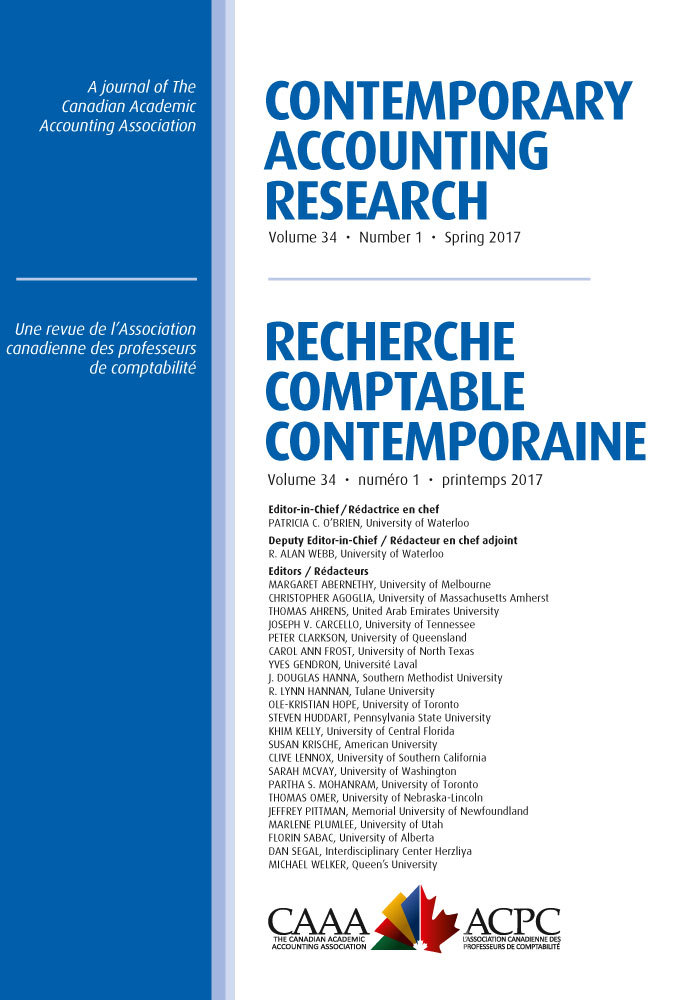 The Market’s Assessment of the Probability of Meeting or Beating the ConsensusGuang Ma, and Stanimir MarkovContemporary Accounting Research, Nov 2017
The Market’s Assessment of the Probability of Meeting or Beating the ConsensusGuang Ma, and Stanimir MarkovContemporary Accounting Research, Nov 2017We investigate to what extent the market uses information that is predictive of whether earnings will meet or beat the analyst consensus forecast of earnings (MBE henceforth): measures of a firm’s incentives to engage in MBE behavior, measures of constraints on MBE, measures of past MBE practices by firm and industry, and other variables. Using the Mishkin test framework and Bonferroni-adjusted p-values, we document that of a total of 21 variables, the market inefficiently uses information in one difficulty measure and four other predictors, suggesting that strong empirically and theoretically grounded relationships concerning MBE behavior are more likely to be unraveled by the market. We further show that a portfolio based on the difference between the objective MBE probability and the market-assessed MBE probability generates significant abnormal returns. The documented return anomaly is distinct from other known anomalies and cannot be fully explained by arbitrage risk or transaction costs.
@article{https://doi.org/10.1111/1911-3846.12232, author = {Ma, Guang and Markov, Stanimir}, title = {The Market's Assessment of the Probability of Meeting or Beating the Consensus}, journal = {Contemporary Accounting Research}, volume = {34}, number = {1}, pages = {314-342}, doi = {https://doi.org/10.1111/1911-3846.12232}, url = {https://onlinelibrary.wiley.com/doi/abs/10.1111/1911-3846.12232}, year = {2017}, }
2005
- JFREquity Structure and Financial Restatement: A Research from ChinaGuang Ma, and Chunsheng ZhouJournal of Financial Research, Nov 2005
- TMWLaw, Corporate Governance, and Corporate Scandal in an Emerging Economy: Insights from ChinaGuang Ma, and Yi ZhangThe Management World, Nov 2005
2003
- ESCentral Bank Independence and Macroeconomic PerformanceGuang MaEconomic Science, Nov 2003